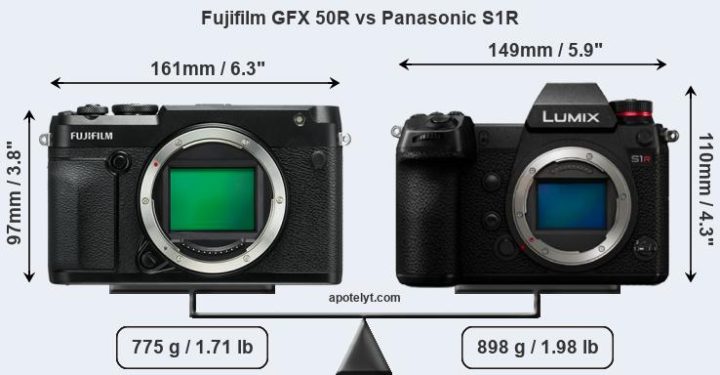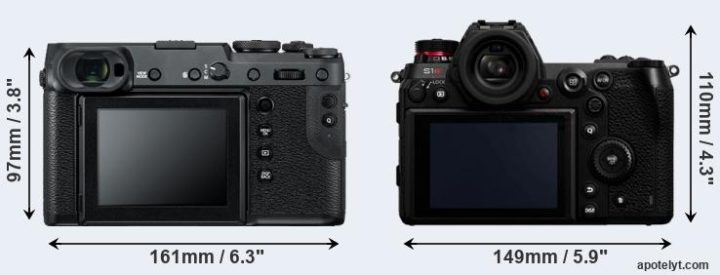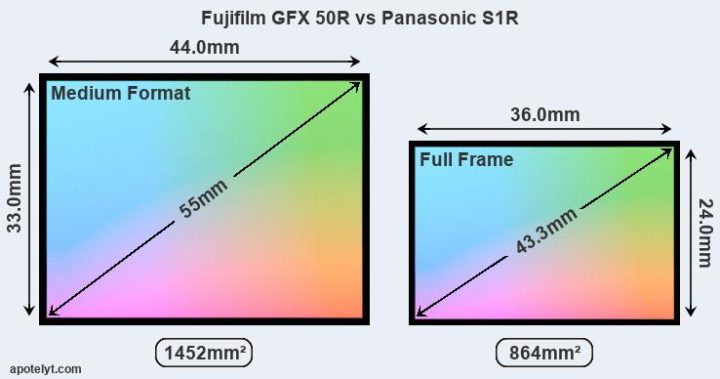Panasonic S1R vs Fujifilm GFX50R and Panasonic S1 vs Fujifilm X-T3 – Let the Unfair Comparisons Begin
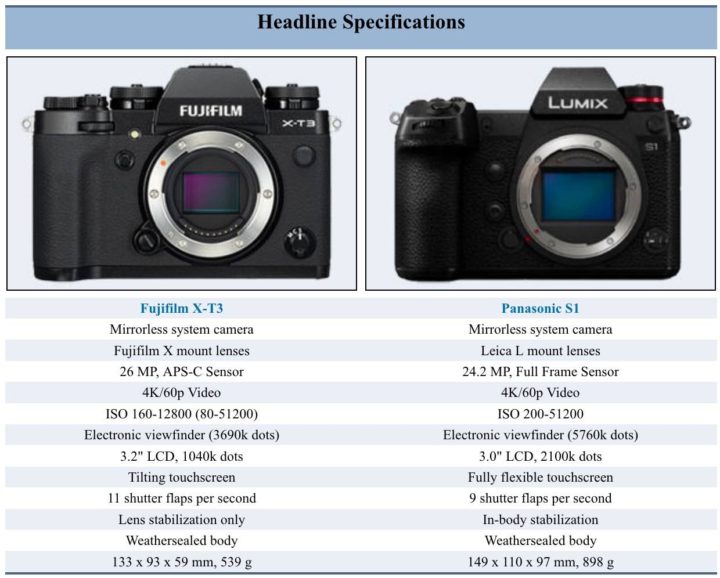
Panasonic vs Fujifilm
Some will call it unfair comparisons, but here on FujiRumors we think every comparison is unfair, unless you compare exactly the same two cameras with the same firmware.
And since everything is unfair, everything goes.
So let’s compare the upcoming Panasonic S1R and S1 (live coverage on L-Rumors) to the Fujifilm X-T3 and Fujifilm GFX 50R.
So, with the help of apotelyt, let’s start!
Follow FujiRumors on Facebook, Instagram, RSS-feed and Twitter
Fujifilm X-T2 vs Panasonic S1
Arguments in favor of the Fujifilm X-T3:
- Better video autofocus: Features on-sensor phase-detection for more confident movie autofocus.
- Larger screen: Has a bigger rear LCD (3.2″ vs 3.0″) for image review and settings control.
- Faster burst: Shoots at higher frequency (11 vs 9 flaps/sec) to capture the decisive moment.
- More compact: Is smaller (133x93mm vs 149x110mm) and thus needs less room in the bag.
- Less heavy: Is lighter (by 359g or 40 percent) and hence easier to carry around.
- Easier travel charging: Can be conveniently charged via its USB port.
- Faster data transfer: Supports a more advanced USB protocol (3.1 vs 3.0).
- Better studio light control: Has a PC Sync socket to connect to professional strobe lights.
- More affordable: Was introduced into a lower priced category (50 percent cheaper at launch).
- More heavily discounted: Has been on the market for longer (launched in September 2018).
Advantages of the Panasonic Lumix DC-S1:
- High quality composites: Can combine several shots after pixel-shifting its sensor.
- Better image quality: Features bigger pixels on a larger sensor for higher quality imaging.
- Richer colors: Larger pixels generate images with better, more accurate colors.
- More dynamic range: Capable of capturing a wider spectrum of light and dark details.
- Better low-light sensitivity: Can be used in poorly lit environments and still produce good images.
- More detailed viewfinder: Has higher resolution electronic viewfinder (5760k vs 3690k dots).
- Easier setting verification: Features a control panel on top to check shooting parameters.
- More detailed LCD: Has a higher resolution rear screen (2100k vs 1040k dots).
- More flexible LCD: Has full-flex screen for odd-angle shots in portrait or landscape orientation.
- Sharper images: Has stabilization technology built-in to reduce the impact of hand-shake.
- More solid recording: Has a full-sized HDMI port for a sturdy connection to an external recorder.
- More modern: Was introduced somewhat (4 months) more recently.
Fujifilm GFX 50R vs Panasonic S1R
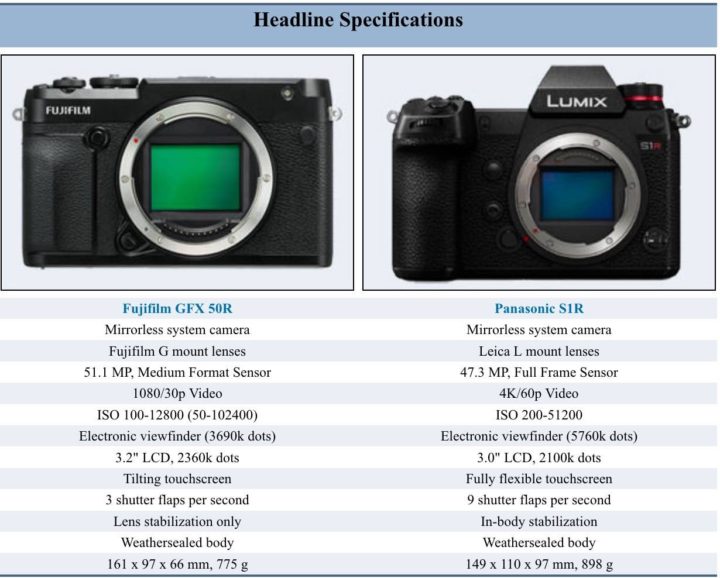
Arguments in favor of the Fujifilm GFX 50R:
- Larger screen: Has a bigger rear LCD (3.2″ vs 3.0″) for image review and settings control.
- More detailed LCD: Has a higher resolution rear screen (2360k vs 2100k dots).
- Less heavy: Is lighter (by 123g or 14 percent) and hence easier to carry around.
- Better studio light control: Has a PC Sync socket to connect to professional strobe lights.
- More heavily discounted: Has been on the market for longer (launched in September 2018).
Advantages of the Panasonic Lumix DC-S1R:
- High quality composites: Can combine several shots after pixel-shifting its sensor.
- Better video: Provides higher definition movie capture (4K/60p vs 1080/30p).
- More detailed viewfinder: Has higher resolution electronic viewfinder (5760k vs 3690k dots).
- Easier setting verification: Features a control panel on top to check shooting parameters.
- More flexible LCD: Has full-flex screen for odd-angle shots in portrait or landscape orientation.
- Faster shutter: Has higher mechanical shutter speed (8000/sec vs 4000/sec) to freeze action.
- Faster burst: Shoots at higher frequency (9 vs 3 flaps/sec) to capture the decisive moment.
- Sharper images: Has stabilization technology built-in to reduce the impact of hand-shake.
- More solid recording: Has a full-sized HDMI port for a sturdy connection to an external recorder.
- More affordable: Was introduced into a lower priced category (56 percent cheaper at launch).
- More modern: Was introduced somewhat (4 months) more recently.


